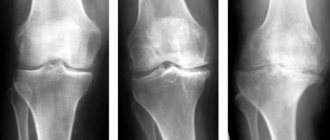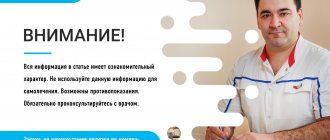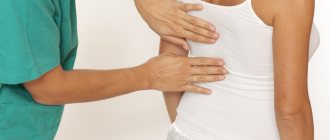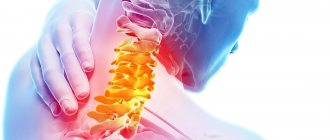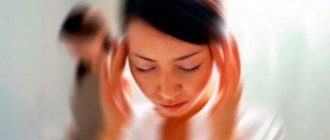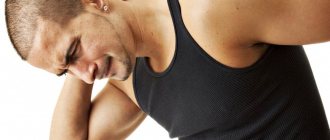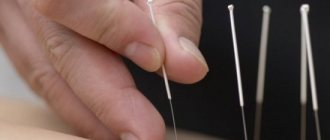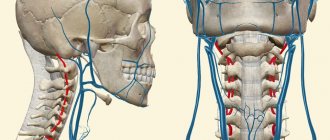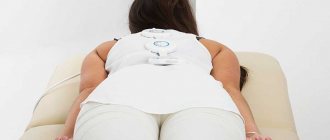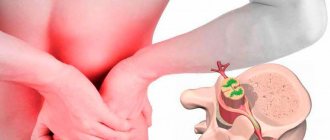The following sports are recommended for a herniated disc:
- Jogging , if there is a soft surface under the feet, and the athlete’s feet are wearing special shoes.
- Cycling and skiing , if not at a high pace, also have a beneficial effect on the human condition.
- Oriental gymnastics - all types are allowed.
- Pilates is a system of health-improving exercises performed at home or in the gym, where you can use exercise equipment that does not fix the body. This allows you to effectively strengthen your muscles.
- Swimming and water aerobics are the most suitable sports for hernia. You can use them as treatment or practice them for prevention purposes. Their action is based on the ability of water to reduce body weight, reducing stress on the spine. Relaxing the muscles helps eliminate muscle spasms and activates blood flow. The recommended duration of classes is several hours per week.
- Fitness. This sport can be practiced by visiting the gym, with the exception of complex exercises. An experienced trainer will select equipment, types of exercises and the duration of their implementation, and create a training regimen depending on the characteristics of the client’s disease. A number of movements in this sport are similar to those used in physical therapy for intervertebral hernia. Fitness involves dividing into stages, during which you need to develop skills and consolidate them. At the third stage, you can start training on simulators. Stabilizing the spine will help maintain it in an anatomically correct position. To strengthen the muscles of the body during training, you can use a fitball.
- Body-building. Strength training strengthens muscles, increasing endurance and tone, but with an intervertebral hernia, the list of movements is reduced. The following strength exercises are recommended: crunches, hyperextensions, leg raises from a lying position, pull-ups. The bench press can only be used after consulting a doctor. You can do exercises to strengthen the muscles of your arms and shoulders. Movements that provide a serious axial load must be avoided.
You should be attentive to your body, and it will tell you what sports activities are acceptable for it.
Important! Before engaging in any sport, you should consult a doctor to determine the cause of the pain, establish and select effective measures to eliminate it.
Is it possible to do bodybuilding with osteochondrosis?
In the gym you can often meet people who, despite being diagnosed with spinal osteochondrosis, engage in bodybuilding. Is it correct? In this case, everything depends on the loads tolerated, as well as the stage of the disease. In addition, there are other nuances.
What you need to know about osteochondrosis?
If your doctor has given you a similar diagnosis, this indicates that your spine is subject to age-related changes. The vertebrae suffer from degeneration, due to which blood circulation is impaired, and bones and joints begin to wear out much faster. Sometimes this can be caused by increased and unbalanced physical activity.
Contraction of the muscles located near the spinal discs leads to unpleasant pain. Subsequently, muscle weakness develops, making sports almost impossible. Sometimes it is the result of hormonal disorders, regularly endured stress, intoxication, etc.
What you need to know about bodybuilding?
Bodybuilding involves regularly performing physical exercises, thanks to which you can get a beautiful, muscular body. If muscle tone decreases, the central nervous system blocks their subsequent growth, which leads to the development of osteochondrosis. Meanwhile, bodybuilding does not affect muscle tone in any way. This indicates that you can exercise even those muscles that are not capable of stretching, but this will not lead to victory over the disease. In addition, such muscle groups will grow more slowly, which will cause problems with body definition. In this regard, people who suffer from back diseases are better off choosing health-improving physical education rather than bodybuilding.
Rules for pumping up the press
If you want to have six-pack muscles on your stomach, but at the same time you suffer from osteochondrosis, then the most important thing when playing sports is to follow certain rules. They are:
- Feet should be on the floor;
- When lifting the press, avoid jerking;
- The lower back should bend;
- The chin should be pressed into the neck.
If you follow these rules, you will eliminate the possibility of back pain. Of course, it won't be easy to get used to them. At first, in order to avoid tearing off your feet and stretching your chin, you will need to lift your body using your arms, but over time this will become a habit. This way you will protect the cervical and lumbar spine and direct all the load to the abdominal area.
What do neck problems lead to?
Cervical osteochondrosis is dangerous for bodybuilders due to the fact that it does not often lead to the appearance of pronounced pain, but reminds itself of symptoms in the form of headaches, ringing in the ears, breathing and vision problems. In addition, shoulder mobility noticeably deteriorates. If you continue to pump them without paying attention to the pain, this can lead to displacement and loss of sensitivity of the nerves.
To reduce the load on the cervical spine, adhere to the following rules during exercise:
- Tuck your chin into your neck;
- Imagine a line starting at the top of your head and going up;
- Maintain the position described above while performing presses and deadlifts;
- Avoid throwing your head back.
Features of performing squats
If you suffer from osteochondrosis, but continue to engage in bodybuilding, then you should control your movements as much as possible and listen to the desires of your own body.
Sometimes when performing squats, unpleasant sensations appear in the lumbar region. They indicate that the large muscles of the buttocks have lost their usual tone due to the fact that the quadratus lumborum muscles are subject to imbalance. This can lead to the pelvic bone moving away from the 12th rib. To avoid this, you should massage, apply a gymnastic stick to the spinal column, and also raise your legs while lying on your side. Author: K.M.N., Academician of the Russian Academy of Medical Sciences M.A. Bobyr
Osteochondrosis is a chronic disease of the spine, expressed in dystrophic changes in osteochondral structures and leading to a decrease in its functionality. Pathology has become so widespread in the world that it is often not perceived as a serious problem. Discomfort in the lower back or neck does not cause much concern in adults, especially since they go away after taking the pill or on their own. Such a frivolous attitude is the main cause of numerous complications of osteochondrosis, when surgical intervention or long-term therapeutic treatment of the spine is required.
Osteochondrosis used to occur in adults, usually after 35–40 years, but nowadays people of young and adolescent age turn to doctors. Timely detection of pathology and the prescription of competent treatment is a guarantee of successful restoration of the functions of the musculoskeletal system and prevention of further development of degenerative processes in spine .
Types of disease
With osteochondrosis of the spine, the pathological process involves the vertebrae, fibrous ring, intervertebral discs , neurovascular bundles, muscles and tendons. Depending on which department has undergone changes, the classification of osteochondrosis is as follows:
- cervical;
- chest;
- thoracolumbar;
- lumbar;
- lumbosacral.
The disease manifests itself in a variety of symptoms, the severity of which depends on the force of compression of the nerves in the intervertebral foramina, as well as the intensity of the inflammatory process. The most unpleasant and, unfortunately, common complication is rupture of the fibrous ring, which leads to prolapse of the nucleus pulposus, compression of nerve endings, blood vessels, and in severe cases, the spinal cord.
Symptoms
The main symptoms of osteochondrosis are pain, discomfort, stiffness, and numbness in the affected area. The pain can be sharp, shooting, aching, sudden or constant. Very often, painful sensations spread to other parts of the body - they radiate to the lumbar region , arm, leg, shoulder, head. It all depends on the degree of damage to the spine and the localization of the pathological process.
Cervical osteochondrosis leads to constant headaches, and when the thoracic region is affected, the same symptoms are observed as with heart disease: a feeling of heat in the chest area, difficulty in inhaling, shooting pain under the scapula, in the shoulder joint. With lumbar osteochondrosis, there is often a feeling of tingling or numbness in the legs. Over time, a person’s posture changes, muscles and ligaments lose elasticity, blood circulation worsens, and congestion develops in the tissues.
Diagnosis and treatment
The main methods for diagnosing osteochondrosis are radiography of the spine, magnetic resonance imaging (MRI), computed tomography (CT). Based on hardware tests, the doctor makes a diagnosis and draws up an individual treatment plan.
Treatment programs imply an integrated approach, using medications (eliminate inflammation), physiotherapeutic methods, and physical therapy. Surgeries are indicated in cases where there is a threat of serious complications, in the absence of effectiveness of conservative regimens.
Types of physiotherapy for osteochondrosis
Physiotherapy is a list of techniques based on the effects of natural or artificially created medicinal substances and physical factors on the human body. During physiotherapy, various types of medical equipment with a certain type of impact are used. The main goals of physiotherapy for osteochondrosis are eliminating pain, stimulating microcirculation and tissue regeneration, suppressing the inflammatory process, relieving muscle tone and spasms, and normalizing metabolic processes.
The main methods of physiotherapy used in the complex treatment of osteochondrosis include:
- electrotherapy (electrophoresis, diadynamometry, amplipulse therapy);
- magnetic therapy;
- laser therapy;
- ultraphonophoresis;
- amplipulse therapy.
Many methods of physiotherapy for osteochondrosis are prescribed only when positive dynamics are established, after completing a course of drug treatment, or in a stable condition, when exacerbations are not observed for a long time. But there are other methods that are prescribed in the acute period: for example, magnetic therapy, laser treatment, short-pulse electroanalgesia. The type of physiotherapy is chosen by the doctor, taking into account the characteristics of the disease, age, localization of the pathology, and the presence of relative contraindications.
Electrophoresis is one of the oldest methods of physiotherapy , which involves the introduction of drugs under the skin under the influence of a weak current. This method is most often used for cervical osteochondrosis . Charged particles penetrate the area of inflammation and accumulate there, providing a therapeutic effect. The duration of action of medications reaches 12–15 hours, which is the basis for achieving a high therapeutic effect. As a rule, doctors add massage, mud applications, turpentine baths and other procedures to electrophoresis.
Magnetic therapy is the effect of a magnetic field on the affected area. In physiotherapy , low-frequency, high-frequency, alternating, and pulsed magnetic fields are used. Treatment is used for osteochondrosis of all parts of the spine . The intensity and time of exposure to the field is set by the doctor using a special device (device). This type of physiotherapy allows you to normalize lymph flow, eliminate pain by blocking nerve fibers, improve the rheological properties of blood, enhance the effect of other types of treatment, and also eliminate muscle spasms.
Amplipulse therapy is a method of physiotherapy based on the use of alternating sinusoidal currents with a given frequency. Amplipulse helps eliminate swelling in inflamed tissues, relieve pain, and improve blood circulation. It has been proven that the use of the technique has a beneficial effect on the functioning of the peripheral nervous system. For physiotherapeutic treatment of osteochondrosis of the cervical spine , currents with a frequency of 80–100 Hz are used; for the thoracic region and lower back, parameters are set from 30 to 50 Hz. The procedure is carried out daily or every other day, at least ten times.
Ultrasound therapy is a method of physiotherapeutic treatment based on the effect of ultrasound radiation on cartilage tissue, muscles and bone structures. To carry out the procedure, a special device with a software package is used, where the parameters of the ultrasonic flow are set. The inclusion of physiotherapy in the treatment complex gives excellent results in the treatment of lumbar cervical osteochondrosis and other types of the disease. After a course of procedures, microcirculation is activated, swelling is reduced, the inflammatory process is softened, and muscle spasms are relieved.
Galvanization is the application of continuous low voltage electric current to the affected area. The energy penetrating into the body triggers complex physical and chemical processes, as a result of which metabolism is activated, muscles relax, and the intensity of inflammation in the lumbar, thoracolumbar, and cervical spine . The course of treatment consists of 12–14 procedures, the duration of which varies from 20 to 40 minutes.
Ultraphonophoresis is a physiotherapeutic treatment of osteochondrosis using medications administered through the skin into tissues using ultrasound energy. After a course of sessions, stabilization of the nervous system, increased elasticity of cartilage and muscle tissue, and a pronounced analgesic effect that is maintained for a long time are observed. As after other physiotherapeutic procedures , blood circulation is encouraged and tissue nutrition is improved.
Laser therapy is the treatment of the spine using laser radiation that is converted into thermal energy. This progressive method of physiotherapy has a number of valuable advantages - it:
- has a targeted effect (the laser beam does not affect healthy tissue, but acts within a given segment);
- triggers the regeneration mechanism of new cells, activates metabolic processes;
- activates blood flow, improves microcirculation;
- gently and deeply warms tissues;
- eliminates radicular syndrome;
- lasts a short time (10 minutes);
- strengthens the body's immune forces;
- increases the absorption of drugs.
Contraindications to laser treatment of osteochondrosis are diseases of the hematopoietic organs, cancer, post-stroke and post-infarction conditions, dermatoses in the area of exposure and some other conditions.
Advantages of treating osteochondrosis at the Profmedcenter clinic
The Profmedcenter clinic has the latest medical devices used in physiotherapy for the treatment of osteochondrosis . Our specialists will quickly conduct an examination, make the correct diagnosis and prescribe treatment according to an individual program. Experienced doctors with successful professional experience carefully select therapeutic regimens, taking into account the age of the patients, the nature of the pathology, and the expected effects of conservative treatment.
Patients will not have to stand in line for an appointment with a specialist, a diagnostic examination or a physical therapy . We value the time of our clients and staff, so we do not allow any downtime. Attentiveness, friendliness, provision of information of interest in an understandable form are the priorities of our clinic. If you have any questions, call +7 (473) 202–2–602 during business hours.
Sports activities prohibited during protrusions
Spinal injuries often occur due to strong shaking, so in case of protrusions, they try to eliminate physical activity with a high load on the spinal column. Heavy lifting also causes high stress on the spine. If you have a history of protrusion, you should not exercise in the gym. Protrusions are diseases in which the following types of sports activities are contraindicated:
- long run;
- jumping;
- Weightlifting;
- Horseback Riding;
- sets of exercises that include lifting weights of more than five kilograms;
- football;
- hockey;
- skiing;
- golf;
- badminton;
- tennis;
- sets of exercises that include abdominal loads;
- other sports in which injury may occur.
Some sports are replaced by related ones, in which similar body movements are transformed into ones where the impact on the spine is not very intense. Thus, running, during which the body shakes violently, is replaced by race walking. It regulates the functioning of the muscles of the spinal frame without complications. In addition, those who practice it are almost five times less likely to suffer from diseases of the cardiovascular system.
